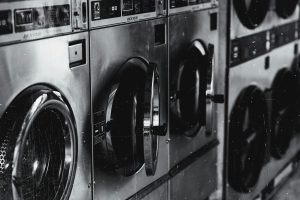Self-Cleaning Ovens: Technologies That Really Work
Are you tired of scrubbing and scraping away at the interior of your oven? Do you dread the thought of tackling that stubborn layer of grease and grime that covers the walls and racks? Fear not, for self-cleaning ovens are here to save the day! With technological advancements, self-cleaning ovens have become a popular choice among homeowners who want a hassle-free and efficient way of keeping their kitchen appliances clean. In this article, we will explore the different technologies behind self-cleaning ovens and how they really work to make your life easier.
What is a Self-Cleaning Oven?
A self-cleaning oven, as the name suggests, is an oven that is capable of cleaning itself. These ovens come with a special cleaning cycle that uses high heat to burn off any food residue and spills, leaving behind a pile of ash that can easily be wiped away. This eliminates the need for harsh chemicals and labor-intensive scrubbing, making it a convenient and environmentally-friendly option.
Pyrolytic Self-Cleaning Ovens
How does it work?
The most common type of self-cleaning oven is the pyrolytic oven. These ovens utilize high temperatures, typically reaching up to 900 degrees Fahrenheit, to incinerate all the food residue and grease inside the oven. The oven has a special coating that helps to absorb and retain the heat, turning the leftover debris into a fine ash that is easy to wipe away once the cleaning cycle is complete.
Most pyrolytic ovens come with a display that allows you to select the self-cleaning cycle and adjust the temperature and duration as per your convenience. Some ovens even have a pre-programmed cleaning cycle that calculates the right temperature and time required based on the level of dirt in the oven.
Benefits
The biggest advantage of a pyrolytic self-cleaning oven is that it can effectively remove even the toughest stains and spills, leaving behind a pristine and hygienic interior. It also saves you time and effort, as you do not have to spend hours scrubbing and cleaning your oven. Moreover, the high temperatures used in the cleaning cycle eliminate any bacteria and germs from the oven, making it a more hygienic option for cooking.
Drawbacks
One of the major drawbacks of pyrolytic self-cleaning ovens is the high energy consumption. The high temperatures used in the cleaning cycle require a lot of energy, which can lead to a significant increase in your electricity bill. Also, the cleaning cycle can take up to 3 hours, which means you will not have access to your oven during this time.
Catalytic Self-Cleaning Ovens
How does it work?
A catalytic self-cleaning oven has a special lining on the walls and roof of the oven that acts as a sponge, absorbing any food residue and releasing it in the form of carbon dioxide and water vapor when the oven is heated. This lining is made up of microscopic pores that trap the grease and dirt, making it easier to clean for the next time.
Unlike pyrolytic ovens, catalytic ovens do not require high temperatures and can self-clean at lower temperatures, typically around 400 degrees Fahrenheit. Some ovens even have the option of a partial self-cleaning cycle, where you can select which area of the oven needs cleaning.
Benefits
The main benefit of a catalytic self-cleaning oven is energy efficiency. As it does not require high temperatures, it consumes less energy, resulting in a lower electricity bill. Also, as it continuously absorbs and releases food residue, it can help to keep the oven clean for a longer time, reducing the frequency of deep cleaning.
Drawbacks
One of the drawbacks of catalytic self-cleaning ovens is that they do not provide a thorough cleaning like pyrolytic ovens. The porous lining can only absorb a certain amount of grease and dirt, which means you will still have to give your oven a wipe down to remove any remaining debris. Also, the lining needs to be replaced every few years, which can add to the maintenance cost of the oven.
Steam Cleaning Ovens
How does it work?
Steam cleaning ovens use the power of steam to loosen and loosen food residue and grease, making it easier to wipe away. These ovens have a water tank that heats up the water to produce powerful jets of steam. The steam, when directed towards the interior of the oven, softens and lifts the grime, making it easy to remove with a damp cloth.
Benefits
One of the main advantages of steam cleaning ovens is that they do not require any harsh chemicals, making them a safe and healthy option for cleaning. Also, the quick cleaning cycle, which usually takes around 30 minutes, means you can still use your oven for cooking on busy days.
Drawbacks
One of the biggest drawbacks of steam cleaning ovens is that they are not very effective in removing stubborn stains and spills. Also, as the steam is directed towards the interior of the oven, the exterior remains dirty, which means you have to manually clean it.
In conclusion
With the advancements in technology, self-cleaning ovens have become a popular choice among homeowners. While all these self-cleaning technologies have their own benefits and drawbacks, they all offer a convenient and efficient way of keeping your oven clean and hygienic. With the variety of options available in the market, choose the one that best suits your needs and budget, and say goodbye to those long hours of scrubbing your oven!









